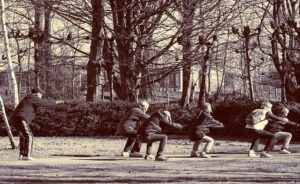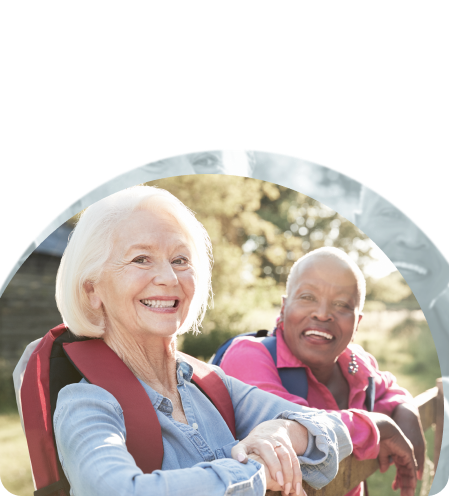Identifying what helps and hinders your physical activity is a step in the right direction!

There are a number of reasons you may want to be physically active. To stay healthy, to be able to carry out daily activities, to spend time with a work group that you enjoy or simply because the sports facilities are pleasant and easily accessible. On the other hand, we may lack the will to do so, for as many reasons! Because we do not make the link between the practice of exercises and the benefits on physical and mental health, because we are intimidated by group sessions, because we lack support around us, because the facilities are difficult to access or inhospitable or because you simply do not have the motivation.
We think we know well the elements that can slow us down in our determination, but are we really able to identify them when they appear to us, or to those around us? What are our “excuses” for not being physically active? And when we face it, are we able to offer alternatives to try anyway? Here are examples of motivators, or barriers to motivation, according to 3 lines of thought: individual, social or environmental factors.
Individual factors
Initially, the elements influencing motivation can be of an individual nature. Knowledge of the links between physical activity and health is an important element. For example, if we have balance problems, but we do not know that certain specific exercises can help improve this ability, we will not be inclined to do it, for lack of motivation, fear of aggravating the situation or fall. On the other hand, if we know that we can target abilities in particular with specific exercises, balance, coordination, endurance, range of motion, posture, this is certainly more motivating. By the way, did you know that doing physical exercise can also improve cognitive aspects? Concentration, attention, responsiveness … This is certainly a motivator, since the loss of cognitive functions associated with aging worries most people.
It is not always easy to find the information. In addition, scientific research into physical activity for health has grown in recent decades, but before that the link was not clearly established and exercise was valued less. Generally, the more information we have on the subject, the more motivation develops, but the reverse is also true! So, if you have knowledge on the subject, questions, debates, do not hesitate to talk about it around you, to encourage those around you to think about it. It is also important that kinesiologists explain the connection between exercise and the health goal. If you do not know why you are prescribed this or that exercise, do not hesitate to ask!
Personal health is also a big factor. A person who has chronic joint pain, an injury or a specific diagnosis often has a harder time finding motivation to practice than someone who does not have a particular condition. And yet, those in the first category often need it even more! We can also consider health-related apprehensions: fear of causing a heart attack or stroke while doing physical activity, fear of falling, or even causing more pain than we already have. These fears can be reduced to our point, the knowledge (or rather the lack of knowledge) of the links between physical activity and health. Indeed, the risks associated with physical activity are often lower than you might think and when they do, they can be greatly reduced by choosing the right exercise. There is, of course, a risk, but in the long term it is much greater if you do not engage in physical activities!
Social factors
Secondly, social factors can also influence motivation, positively or negatively. Social support from relatives is important, when you are encouraged by your partner, by your children, by your friends, the motivation is reinforced. Another important support is that of health professionals. When your family doctor advises you to participate in more intense or more regular physical activity, they give you more willpower to do so. These elements, when they are absent, have a negative effect on motivation to practice … So do not hesitate to encourage your loved ones, ask for their support and question your doctor!
Participating in group training is also often a way to combine the useful with the enjoyable, to feel less isolated and to share your situation with people who understand it better. But this aspect can also be seen differently: some are intimidated by the group, fearful of slowing down. This is why the dynamic between the participants is important. Trying several options will help you find the right one for you. It is important that participants feel encouraged and supported during training. Mutual assistance and respect are essential. The kinesiologist participates, but the whole group too!
Environmental factors
Finally, our environment can sometimes influence our motivation. Having access to resources to practice is important in the motivational process. Having a sports center nearby, or more simply wide sidewalks in a pleasant and safe neighborhood, or an accessible park, are considerable advantages. Living close to a sports center is one thing, but if it also offers specific programs for the elderly or for special conditions such as Parkinson’s disease, then several barriers to motivation are overcome. As you will have understood, an elderly person living in an unpleasant neighborhood, without sidewalks and few green spaces, or whose nearest sports center is 40 minutes away by transport, will have more obstacles to overcome to find motivation. For example, we could offer him carpooling to get to an activity!
Take action!
You were probably already aware of several motivational elements around you, this article may have brought you to others. All you have to do is put these theories into practice. Practice identifying the elements that fuel or hinder your motivation, or that of those around you. Then ask yourself what alternatives you could imagine to get around these barriers, and give it a try!
Burton, E., Farrier, K., Lewin, G., Pettigrew, S., Hill, A.-M., Airey, P., … Hill, K. D. (2017). Motivators and Barriers for Older People Participating in Resistance Training: A Systematic Review. Journal of Aging and Physical Activity, 25(2), 311–324. Doi : 10.1123/japa.2015-0289
Costello, E., Kafchinski, M., Vrazel, J., & Sullivan, P. (2011). Motivators, Barriers, and Beliefs Regarding Physical Activity in an Older Adult Population. Journal of Geriatric Physical Therapy, 34(3), 138–147. Doi : 10.1519/jpt.0b013e31820e0e71
Schutzer, K. A., R. N., M.S., Graves, S. B. (2004). Barriers and motivations to exercise in older adults. Preventive Medicine 39, 1056–1061. Doi : 10.1016/j.ypmed.2004.04.003







Comments